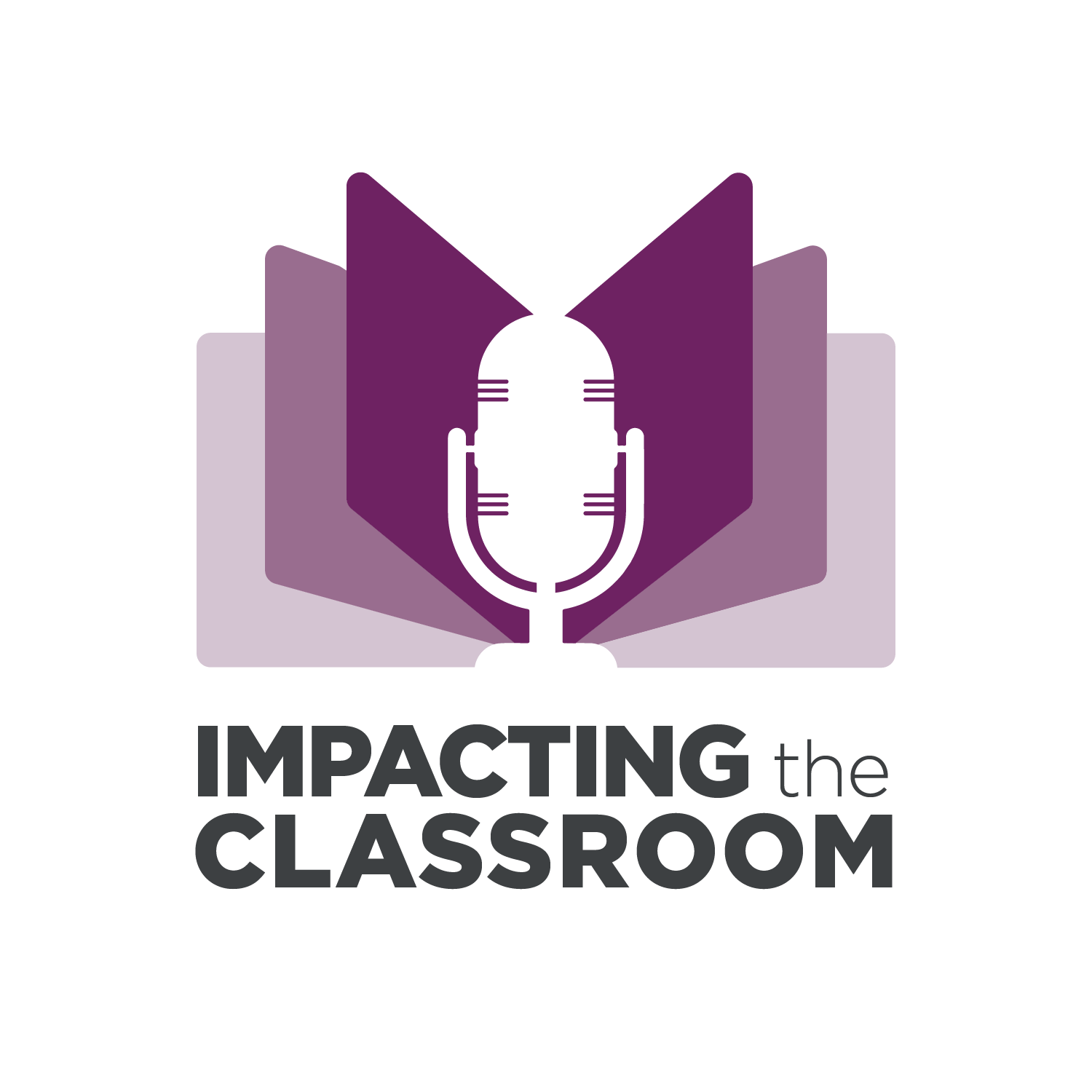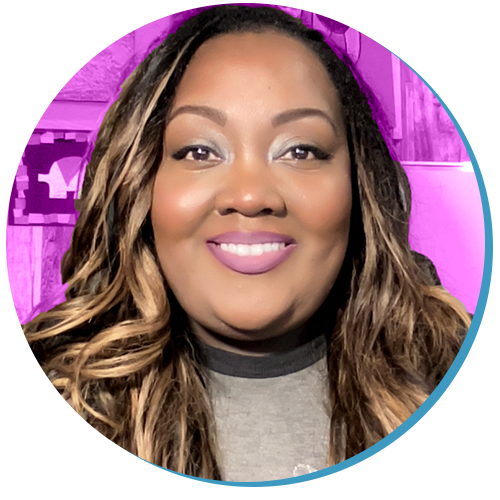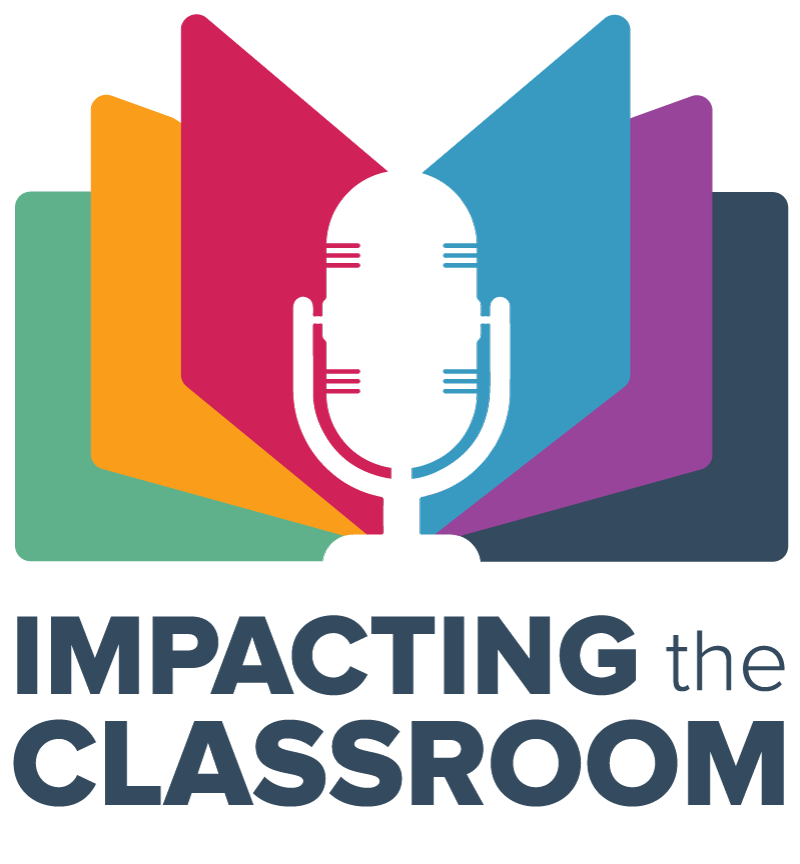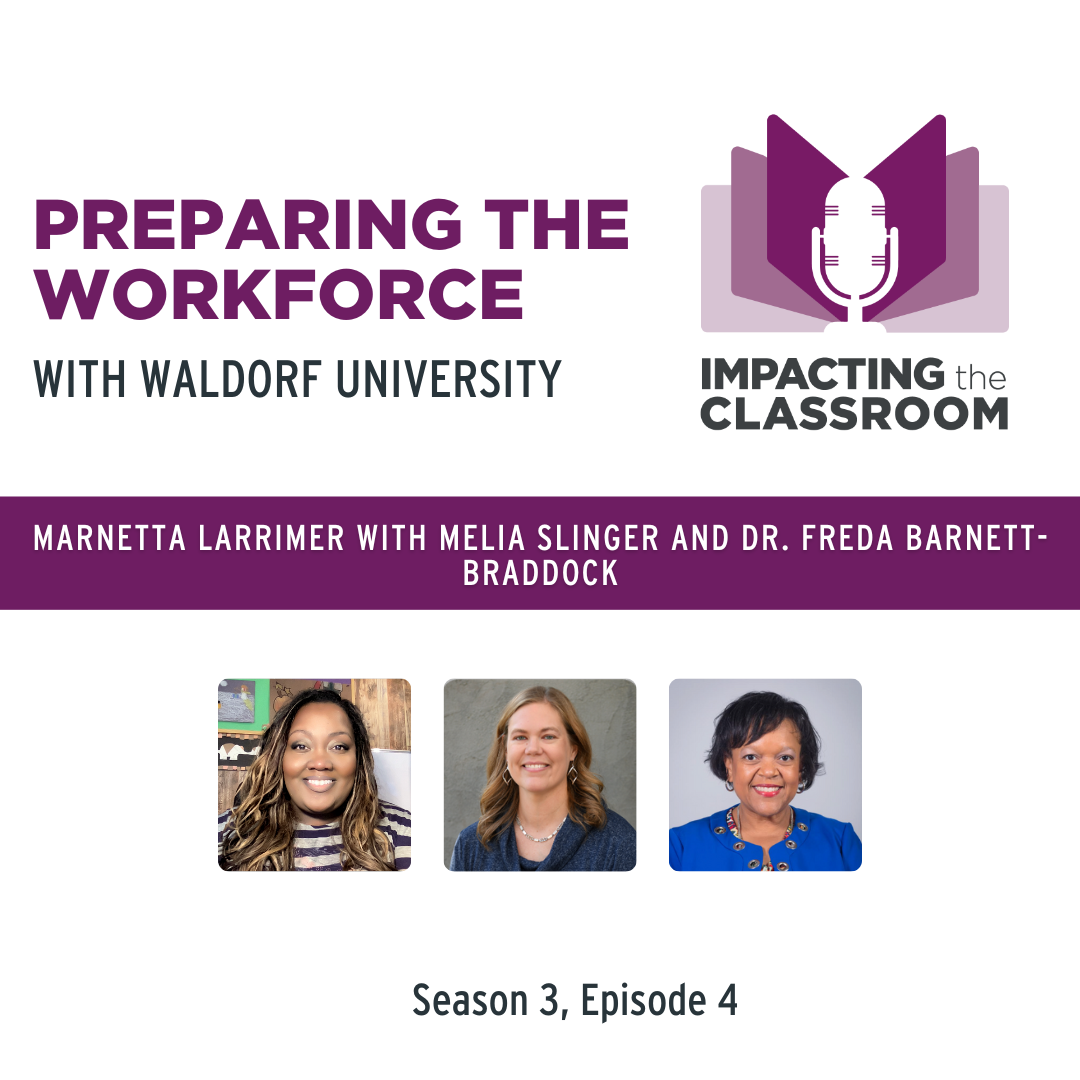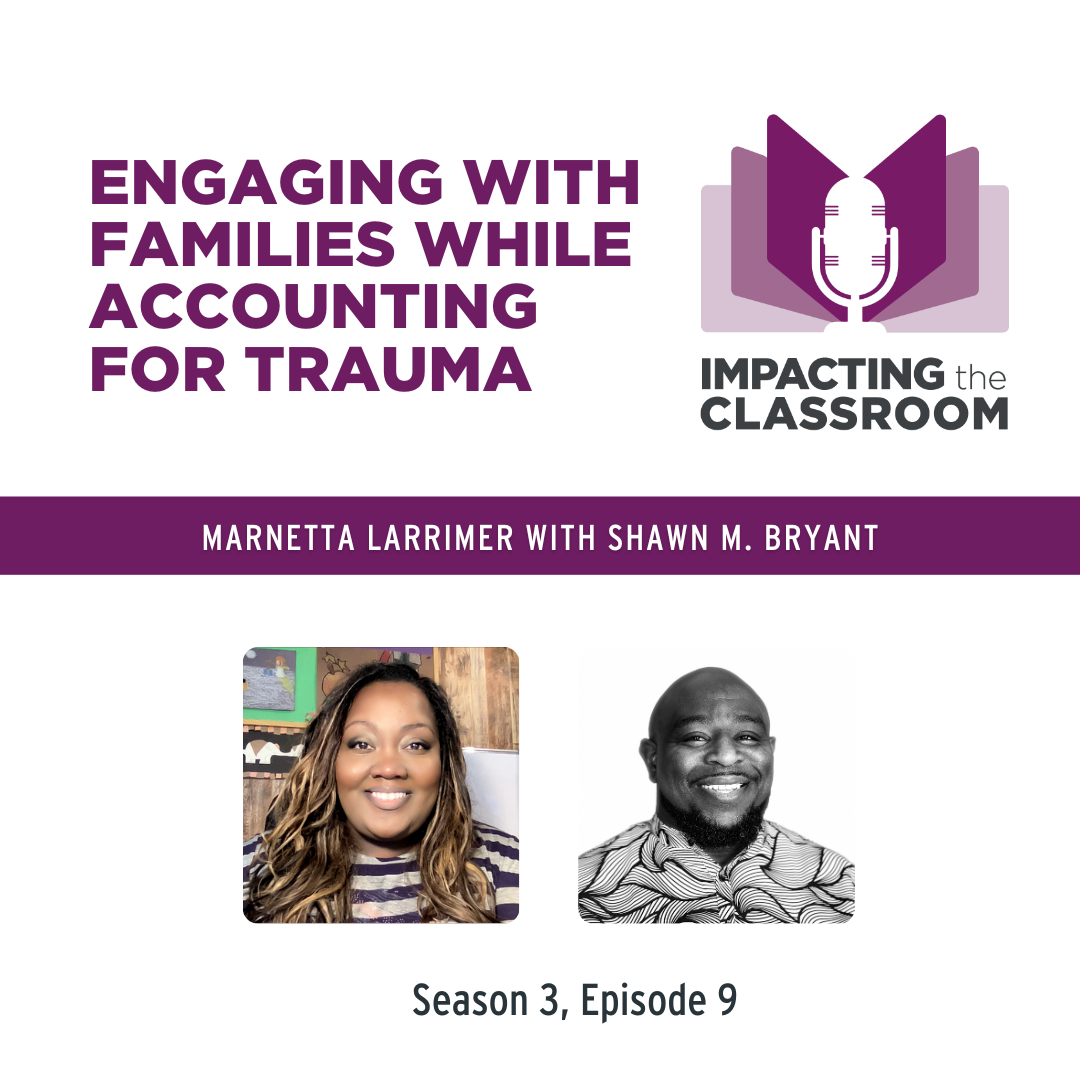Marnetta: Hi, listeners. It's me, Marnetta Larimer, here at Impacting the Classroom. As always, we like to kick off our conversation by asking, what's impacting the classroom? Today, Jenny Fleming and Lynne Cook are with us to share their class implementation in Nebraska schools. Ladies, would you like to introduce yourself? Maybe Lynn, you could go first.
Lynne: Hello, my name is Lynne Cook. I am the coach specialist for Nebraska Step Up to Quality. What that means is I'm responsible for the recruiting, the training development, and assignment of the Step Up to Quality coaches who then implement best practices at programs throughout the state.
Marnetta: Wonderful. Welcome, Lynne.
Lynne: Thank you.
Marnetta: Jenny?
Jenny: Sure. Thanks for letting us be on this platform. I appreciate it. My name is Jenny Fleming. I am a program quality specialist at the Nebraska Department of Education. My primary focus is with the quality rating improvement system, QRIS team, Step Up to Quality. Lynne and I are our colleagues on the same team together.
My primary role with Step Up to Quality revolves all around the CLASS tool. I do a lot of coordination of the trainings. I work with our amazing group of observers who are CLASS reliable and conduct those observations for our team. I also get to have communication with programs, teachers, providers across the state who are participating in Step Up to Quality when it comes time for their observations. I like to say I'm a behind the scenes kind of girl, coordinating a lot of things, which is ironic that I'm here today, but happy to be here and excited to share what we do in Nebraska.
Marnetta: Yeah, I'm excited you guys are here as well. There's no behind the scenes here, just straight out front. Let's kick this off with talking about your CLASS implementation team. How would you define it? And how did this team get formed? I did hear Lynne talk about her selecting and assigning coaches, but tell us a little bit more about this team and how they got together.
Jenny: Sure, I can kick off. Lynne, jump in whenever you feel the need to. Our QRIS has been in operation really since 2014, but of course there were years preceding that for planning and such. Really, CLASS came about as the head starts were using them. There was a team that actually proceeds, Lynne and I, who did all the training and learning about the CLASS tool. They brought the CLASS tool to the curious planning team basically and said, this would be a great tool to be able to use in our assessment piece.
Fast forward, 2014 where they're kicking off, we really felt it was important to have a good, strong foundation in terms of the assessors or we call them observers in the state of Nebraska. We have our statewide team of who's in the planning of it and the rollout of the QRIS, but then we have our observer team that works very closely to conduct those observations, then of course, Lynne's team of coaches, and then of course the programs. We can't forget about our providers, our directors, our teachers who have to implement that as well. Together we work to continue to improve quality.
Marnetta: Thank you. Lynne, did you want to add anything to that?
Lynne: No, I think that was beautifully said, Jenny. Honestly, it takes a village. It really does. It takes so many different levels of support to, again, hitting those high quality indicators and best practices. It takes everybody's efforts, support, and buy-in. It's huge. Yeah, I think it's working very well.
Jenny: Talking about our observing team, we have built the system where it's very strong. We have a CLASS anchor. They all know their stuff. They know their CLASS in and out, but that anchor is there to ensure that our team is using the tools to Fidelity. In addition to observers needing to certify through Teachstone, we have that level then of live reliability. Our observers go out with our anchor and ensure that they're scoring using the tool to Fidelity.
The reason for that is so that anyone across the state of Nebraska that has a CLASS observation knows that no matter who within the state is doing their observation, they're going to be scored or coded the same. It's done to Fidelity. That's just an important piece of the tool that we've brought to our team.
Marnetta: I love that you expanded on that, because it was actually going to be one of my follow up questions. I had a follow up question for Lynne as well. You were talking about your observers being part of this strong foundation. My question was, how are you supporting them? You gave some beautiful examples of how you are supporting them in this process to deliver the tool with Fidelity in a way that helps support the buy-in for your educators, because if there's any differences, challenges with that observation cycle or that feedback cycle, it really is a barrier to moving forward and moving that needle in the direction in which we want it to go. I love that you added extra information to that.
Lynne, you were talking about buy-in, which made me think of something else. What have been some of your effective methods to create that investment into the CLASS system in those interactions with stakeholders?
Lynne: That's an excellent question. I will say for buy-in, in my role as coach specialist, I get to talk to programs who are inquiring about coach services. I'm backtracking a little, and then I'll dive into the CLASS piece.
What I hear and what I'd like to ask during this coach interest questionnaire, I like to learn about the program. What's their goal? Why are they even participating? What is it they want to achieve? What is their why? Because I want to know, is this just the director?
I'm thinking of a center base. If it's a director, are they aware? Are they on board? It's a family child care provider. Again, it's knowing, okay, why are we doing this? What is it you want to achieve? Then those coaches, once they have those answers, can work with that and move forward with it.
So much of what I hear from providers is, they want to go through these assessments, the CLASS assessment, because they want to show their level of quality. They want to tell people, this is what I offer to you and your family every day. It's really giving them that recognition that they are doing the best they possibly can for themselves and the children that they serve.
Marnetta: Thank you so much, Lynne. Jenny, from your end, talk to me about buy-in and what that looks like, what effective strategies you've used to help to build that investment.
Jenny: I think it comes down to when it comes time for an observation. As we know, we've been in the classroom. We know that it can be very intimidating to have someone watching your every move and all your interactions, taking in all those conversations, and such. It's overwhelming. I remember being in the classroom and having that experience.
I want to really, when I'm reaching out to those educators, to say, okay, now's your time, we're going to do that observation, I really want to ease those fears as best as I can. Lynne and her team, of course, have to do that preliminary work of helping them find the buy-in of it. But by the time they come to me and they're ready for those observations, it's more so easing their nerves. I just share with them that this is their opportunity to really showcase their skills, showcase those relationships that they have with their children, the students in their classrooms, and just highlight their strengths.
A lot of times, when you can put it in that perspective, you can tell they just breathe that, okay, I can do this. It's not a test, it's not I got you. It's not, it's a snapshot of their morning, and it's a snapshot of the interactions that they have with he children. It's all for program improvement and growth, because we all can grow no matter what we're doing and where we're at. We can all grow in some aspect, but it's also showcasing their strengths. I hope in those conversations that it does continue with that buy-in and continue easing their nerves.
Marnetta: Yeah, conversations like that are important, especially with the implementation of CLASS, especially when people don't feel like they were part of those decisions, and they feel like it's something that's happening to them. Having those conversations with educators, hey, this is just your regular day, you do this all day long, just do what you do. We're just going to document those things.
There's nothing extra for them to do. These are things that they're already doing. It's not another thing to add to their day. Just continue to build those relationships with children that we know drive outcomes. We're just going to document that, so just do you. Be your wonderful, beautiful best selves that you do every day. Somebody's just going to document that. I love that kind of conversation to just really ease those nerves and just remind them that they do this every day. This is nothing new for them.
Lynne: Marnetta, just this week, I was speaking with a provider who is interested in coach services and going for an observation by the end of the year. I asked what concerns she had. She did talk about, oh, I heard the observation is scary. I said, well, think about it like this. You know what an amazing teacher you are for your children. She goes, yes, I do, I believe that. I said, that's perfect. Think of it as you teaching that observer how to be an amazing teacher. You're modeling for that observer, what you do so well.
It was changing that perspective for her. She said, I never thought about it that way. Before I felt like they're scrutinizing me, everything I say, everything I do with this child. I said, no, you're the teacher. You just show how you work, how you communicate with the children, all of that, and just do your magic. She felt so much better after thinking about it in just a different light.
Marnetta: I love that shift in perspective because that's really what it is. That's going to be a key takeaway from this episode, I can guarantee. I can just imagine how much more empowered I would feel going into an observation with that kind of mind shift. Jenny, what were you going to add?
Jenny: Lynne summed it up, actually. I couldn't add any more to that, actually.
Marnetta: I know because everybody was like, oh, we all had so much to say. Wonderful. Great examples of how to create that buy-in and really align this partnership on this CLASS journey. We talked about observations, let's talk about data. Who's responsible for planning how you collect the CLASS data from those observations?
Jenny: We have an amazing system in place in terms of data collection. We've talked about the observers, and they're going out coding and collecting the data that way. Then we also have a system that the observers use to import or enter the data into. Actually, we're very fortunate on our team that we have an early childhood data person, who works very closely with what we call NECPRS, the Nebraska Early Childhood Professional Record System. She's able to pull data as we need it.
If we are looking as a statewide, what are the overall domain scores, or public school, public preschools, what are their averages or whatever. She can drill in and get all of that information for us, so it really helps us drive progress. When you know better, you do better. When you know like, okay, we are really seeing where we need more training on quality of feedback as an example, then we can really think about, okay, how can we help those in the state of Nebraska? That really drives what trainings can be developed in the future.
Regionally, as programs receive their results of their observations, they can say to their regional person, I'd really like to cover more about relationships, because that is something we may have not been able to demonstrate during our observation. How can we do that? What kind of trainings do you have locally that we can really tag in on and have offered to our staff? It's just a great way.
Data is important. It drives what you do. Without data, you don't proceed forward, you don't make progress. That is on the statewide level of looking at data. But then of course, Lynne, I'll let you take over. How do programs use that data?
Lynne: Yes. As far as data goes with coaching, we have a CLASS self-assessment that the program themselves can do before the coach even gets there. I really encourage them to do that because, again, if it's a family child care home, assess yourself. It's a basic overview to start planting the seed about what we're going to be talking about, what the coach is going to be looking at with them.
If it's a center base, I love it when the director goes and does it in each classroom along with their lead and support staff, and then they come together and have a conversation. When that coach gets there, they can have a really good conversation about, what did you see? What did you identify? Again, that helps with that buy-in that we just spoke about.
That data is amazing. Once a program does go through rating with the CLASS observation, it's so informative for that provider as well as the coach to sit down and debrief. Talk about, my goodness, here's your strengths. Look at what you knocked out of the park. What are some areas for improvement and growth? What new goals can we develop off of this? That's where the data comes into play as far as the coach team.
Marnetta: Wonderful. Both of you gave some really great examples on how that data can inform professional development, whether on the observation side or on the coaching side. Can you give me and the listeners a specific example of any decisions that were influenced by CLASS data? How did the data inform maybe a specific program or implementation decision? Do you have any specific examples of those?
Jenny: I can think of an indirect example, one that came up over the last couple of years. Step Up to Quality had been going through a revision. We first go around. Those that were participating and going for their rating had choices, and they still do. They still do have choices. But for their first go-around, they had two different tools that they could do both with.
The second time around, we changed it to choosing. They had a choice of different tools that they could use, but they would choose if they chose to go that far into their rating. The hiccup was CLASS wasn't readily available for family child care. We were hearing for family child care providers saying, why? Why can't we use this?
We did a little bit of a pilot project during Covid where we said, why? Why can't we? Let's try this out? We had a couple of our wonderful teammates on the observer pool or observer team go out and do some observations in family child care homes both using the toddler CLASS tool and then one using the toddler one using the Pre-K. They use the data to inform us that it would be okay and the best in our state for what we need to use the toddler CLASS for family child care.
With that information, we were able to offer that to our family child care providers in our latest revision of our QRIS. Let me tell you, they are rocking it. Those family child care providers are just rocking it with their class observations. Those interactions are amazing. We're seeing such great success.
That's why I say it's an indirect way of an example, but they take so much pride in what they do. This is their way of showing, I can do this, maybe talk about professionalizing the field, and having everyone be seen as a professional, an educator, and their importance that they play in a child's life. They're showing it. In family child care center-based programs as well, we're seeing it. We're super excited for that.
Marnetta: I love that example. I'm a former family child care home owner here. I love that push to support legitimizing the work that they're doing in that space, which is so hard still across the country, surprisingly, for family child care homes. How many classrooms do you guys have in your program?
Jenny: That's a challenge because we are statewide.
Lynne: We have programs. We can give you numbers of programs. Where are we at right now, Miss Jenny? Are we right at 753 or something like that, participating programs? That's centers, that's family child care, that's head starts. Those are early childhood public school preschools. Classrooms, holy moly. That would be a lot.
Marnetta: Yeah. I was just wondering if you want to give the listeners an idea of the size of this program so that as they're listening to your thoughts and things, they can visualize when they're thinking about their own implementation. Yeah, that's a lot.
Jenny: It's voluntary. Their participation in Step Up to Quality is largely voluntary and so is their path. We have programs that enter in at a step one and aren't quite there yet. They're not quite ready to proceed along the path. That's their journey and that's their choice. We're here to support when they're ready to continue on.
We have varied levels of participation in Step Up to Quality, but it sits on their timeline, and it's on their journey. We're here, like I said, to support them and partner with them along the way. We continue to grow. Nebraska is big. We're very spread out. I think as more people become comfortable with the idea of becoming a partner with us or in participating in Step Up to Quality, the more we grow. We're excited to see the growth.
Lynne: I'd say it's also those grassroots effects. A provider in an area will go for Step Up to Quality. Of course word of mouth, they're going to share out if it's been a good experience or not. We see that once one person has done it, the floodgates open. People are like, well, I want this recognition. I want to see how I do in this. They're excited, they encourage each other then, and they have their little community. It's always opening the floodgates as people move forward.
Marnetta: That's great. We talked earlier about observations that are going to happen and the conversations that you have, people who are nervous, they'd come to you, and they're like, look. They're having these feelings. Do you have a standard process of communication with educators in the weeks leading to their CLASS observations?
Jenny: Yes. They know it's coming. They submit what we call a rating request form saying, yes, please come out and observe us. They have a 90-day window, so to speak. We narrow it down. We want to ensure they're ready. We want to observe them in their normal, typical day natural routine.
What I do is I will call them with a two-week window when it's beginning. For example, it's Friday. If I have a program that is getting ready for their observation in the next two weeks, I'll call them today and just say, guess what, we're coming out in the next two weeks. This is going to be your observer, this is what they're going to do. That observer then will reach out to them a business day in advance to let them know that they're coming that next morning to do the observation.
That's their time to really ask those questions, just ensure, okay, we've calm the nerves. It's not going to be like a, knock knock, I'm at your doorstep. I'm here to observe. They're going to get that advance notice of the observation to help ease a little bit of that nerve going in. Like I said, I hope that that conversation that I have with them helps them put it into perspective like, yeah, I've got this, I'm ready, I can do this. I'm going to show them what I got and just be myself.
That's what I say. As we know, anytime you change up the environment, anytime you change up the routine, schedule, anything, you introduce new materials or anything like that, you change it up. It's not what is typical. What I'll just say is keep it routine, keep it typical, and let it be what it will be. I hope that that helps.
Lynne: As soon as Jenny gets off the phone with that provider, the very next call is typically to the coach, not from Jenny, from the provider to the coach, because they're like, my goodness, my two week window is here. The coaches just walk people off back from the ledge a little bit and reassure them. They're like, look at everything we've done. Look at all the evidence you have ready for the radar and you're ready for the observation. They just really also support what Jenny just did in bringing that level of calm to them and reassuring them they've prepared hard. They are ready for this, and now it's their time to shine.
Marnetta: Yeah, deflaming the amygdala. It's my new term. I want to clarify something. Jenny, when you were talking, you said that they fill out a rating request form for the observation. Is that correct?
Jenny: Yes.
Marnetta: Do they not get observed if they haven't filled out that form?
Jenny: Yes. This is specifically for our QRIS. We also have another program within our department in the early childhood office of, where they work specifically with our public preschools. That is a little bit different. But specifically for QRIS, we go in there saying we're ready. Again, this is their path, their journey, and their timeline.
When they say, you know what, we have worked so hard, we have really assess our own strengths, we've trained, we've attended CLASS trainings, we've done this, we've worked with our coach, we are ready, so come out and rate us and observe us, it's twofold. The observers take care of the CLASS observation, and then we have a separate piece for the actual rating of other quality indicators. Yes, absolutely. We only go where we're invited because it's not supposed to be a surprise. It's not, it's really not. We want them to let us know when they're ready and then we'll be there.
Marnetta: Thank you for clarifying that for me. I appreciate that. I was like, let me catch that, make sure I understand. All right, perfect. We talked a lot in between our questions about PD and some of the things that you're doing to help people on this path. How do you help educators adopt new practices? What does that look like? What is offered to them?
Jenny: Yes, that's a great question. We actually have a team of affiliate trainers. They have gone through the training through Teachstone and are able to deliver the introduction CLASS training. We offer that to our programs. There's also the CLASS observation or reliability training to set them up in terms of if they choose to go through certification. We offer that as well.
We find that a lot of times, if their team is part of a bigger team, maybe it's a director that may attend that observation training, or a head start may send someone to do that so that they can in-house, do some observing, and such. It's open to whomever chooses to be interested in attending that training.
Along the way too, we've looked at trainings that are offered through Teachstone. For example, when we had ARPA funds come in, we really chose to use some of those specialized trainings through Teachstone. I'm trying to think of a couple that we've offered along the way.
CLASS instructional support, for example, we knew that that was something that we needed to really focus on. We offered trainings using ARPA funds and such. We've used the data. We know that we're lower in this domain, so we're going to work on how we can support that. That may be coaching.
If a coach has gone through training, maybe bringing out resources that they've come up with. Of course, using Teachstone's amazing website. You've got tons of podcasts, blogs, and all that good stuff. Using those resources to help teachers see like, okay, see, this is what this looks like in a classroom. Just fine tuning trainings to meet the needs.
Marnetta: Wonderful. Lynne, what did you want to add?
Lynne: I was just thinking about the coaches and that PD. The coaches themselves attend CLASS trainings that Department of Education offers in Nebraska. They too have that information. When they are on site in programs, they are utilizing the website and videos. Because that has been such an outcry for programs, they want to see it in action. They want to see it modeled.
Many of us are visual learners, myself included. They do really appreciate seeing that. They also love the modeling of the coach as well or just talking through it, what it's going to look like. Yes, the providers have been fantastic about taking part in the free trainings that NDE has provided for them over the past year.
Marnetta: Wonderful. When your coaches go out and the coaches are using the data and supporting people with their growth, what does that look like? What are those specific steps?
Lynne: Let's say they have an observation, or they maybe worked on their self-assessments, it's really sitting down and having an honest conversation about where do we want to go from here. This is what I see as strengths. Here are some areas that maybe could use a little bit of attention. Where do you want to go? It's always led by those providers because that's where that buy-in is. What matters to them in those moments?
The coach's job is to share why it's important, always to share the why. But then once those providers discover what it is where they want to go, that coach is all on board again to model for them, find the resources like the Teachstone website, and just helping them really dive in to honing in on strengthening those areas that they've identified.
Marnetta: What's the cadence of those visits? Is there a cadence or does it just vary by a provider?
Lynne: We are very flexible and non-prescriptive with what they're available with. We really try meeting people with where they're at and what is it they're needing from us. It depends on the time of year. Think about in November, December, all those holidays hit. The coaching might draw down a bit, but it's up to that program. They will set the tempo.
Some people are ready and raring to go. They're like, I want to meet. Sometimes I have to put parameters on a maximum visits of this. We can't be there every day. We're not volunteer workers or anything.
We really don't want to overburden them because they have so much going on in their worlds. Those programs, they're balancing a business, their own personal lives, the families they serve. We don't want to become a burden. We want to truly be a partner in this with them, a guide through the process, and a resource or to help them find resources. It's very much strengths based. We're always trying to build them up and not putting more undue pressure on them.
Marnetta: Maybe last question, I'm not going to lie to you. What is the measure of effectiveness of those coaching? How do you measure the effectiveness of those sessions?
Lynne: My goodness, I do annual coach services surveys to all providers who receive coaching throughout over the past calendar year. I get to see the growth and mindset change of all these folks. They give this feedback for me, what can be better, or would they change anything at all?
The satisfaction survey percentages are 95 % or higher annually. Providers find this to be one of the most beneficial resources for them in our program because again, we are building them up. We are helping them prepare and create their program the way they want it to be.
The other thing we use, it really is going off of the scores off the observations. We're looking at that and and seeing, okay, what can we change? What can we move forward with? I also like to look at how many people drop out of coach services.
Honest to goodness, I'm trying to think of what the percent would be. It is minimal. Honestly, I could probably count on one hand. How many people have bypassed on the coach services once they've started? Once they start, they are hooked. They're like, we want the support. It's incredibly effective.
Marnetta: That is wonderful to hear. Jenny, for the observers, what is in place for mitigating coder drift or things like that? What do you have in place for your observers to support them as far as professional development or things like that?
Jenny: Great question. Your timing is perfect because we just worked through this. We participate annually in double coding. Our anchor does double coding with a representative from Teachstone. She'll do that. This year, actually, we tried something a little bit different. We did some calibration videos. The entire team of observers received the same video.
We did the calibration activity, and then we met as a team to just debrief about it to ensure, okay, nope, this is what the master coder is saying, this is how this was coded, and such. It just helps us talk through things to ensure we're still seeing things the same way. Of course, they have their annual certification that they need to keep up, but they also have to go out for reliability at least annually.
Our rule of practice is after every tenth toddler CLASS observation, they need to go out and do reliability again with the anchor. That's of course to help with observer drift. We do that for each of the tools. It really does help. They stay fresh, and of course again, those are live, those are live observations because that's how we do our observations with our QRIS. Everything is live.
The online piece for certification is wonderful. It's great, but we want to take that step further and actually be the exact same as what they have or what they're doing when they complete an observation on their own. Our anchor, we joked in our meeting, it's a phone a friend. If they're out doing an observation and something not typical may come up or whatever, that observer is phoning a friend after that observation, like, did I do this right? Just let me confirm that my plan here was correct.
It's a very good team of observers who know they can just rely on each other for assistance. Of course, Teachstone, we reach out to you all when you have questions and such. We try to keep up so that observer drift does not happen.
Marnetta: I love that you're using our services in really wonderful ways. Also the CLASS community, if your educators aren't on there, great way to talk with other educators around the country and internationally about what's happening in the classroom and tips and tricks. They're really, really a supportive community in that space.
Believe it or not, we are almost at time. I want to give you this opportunity to leave us with one thing that you would like to tell our listeners, one bit of advice around implementation or whatever you think would be beneficial for them to know. This is your high notes. You're leaving out on this high note. Jenny, would you like to start?
Jenny: I guess I would like to just say, don't let it overwhelm you. Take it bit by bit. If it means educating yourself and by taking a training, even just simply listening to podcasts, reviewing the website, do that. Don't look at the big, huge overall picture and say it's too hard, I can't do it. We want that growth mindset, so we want to take it bit by bit by bit.
When you as a leader can say, this is doable, then you have that mindset that you can pass on to the staff, your team. Take it bit by bit and ask for help. Everyone's a partner in the world of early childhood.
Marnetta: Great message, Lynne?
Lynne: I'm a firm believer in the learning and growth at every age and stage of your life. I just feel this tool is another piece for that learning and growth. I agree with Jenny. Dive into it, give it a try. Some people take it very personally, like it's a personal attack on who they are and how they work with children. But honestly, if you're looking at it just as a learning and growth tool for you in implementing best practices, it's going to make you the best teacher possible. It's going to help the growth and development and learning of the child you're working with.
That's our future. That's future success for them, and that's our future. We will be in their hands one day. We're just trying to embrace that learning, do what you can do, and just let your light shine.
Marnetta: This is so great. Thank you so much, Jenny and Lynne, for joining us. Listeners, hope you enjoyed today's conversation. You follow us along for other sessions that we will have. You can find today's episode and transcript on our website, teachstone.com/podcast.
Don't forget, I care about what you think. Drop us a comment on Apple Podcasts and a like, or whatever streaming service that you are using, so that we can continue to make great content that you want. You can also send us an email at
[email protected] if you just want to say hi to your girl. As always, behind great leading and teaching are powerful interactions. Let's build that culture together. Bye, everyone.
Thank you to today’s team Marnetta Larimer is our host. Our producers are Isabella Henriksson and me, Meghan Cornwell, editing help is from Castos. You can find Impacting the Classroom on our website at teachstone.com/podcast where you can also listen to our other show Teaching with CLASS. Impacting the Classroom is a teachstone production.
